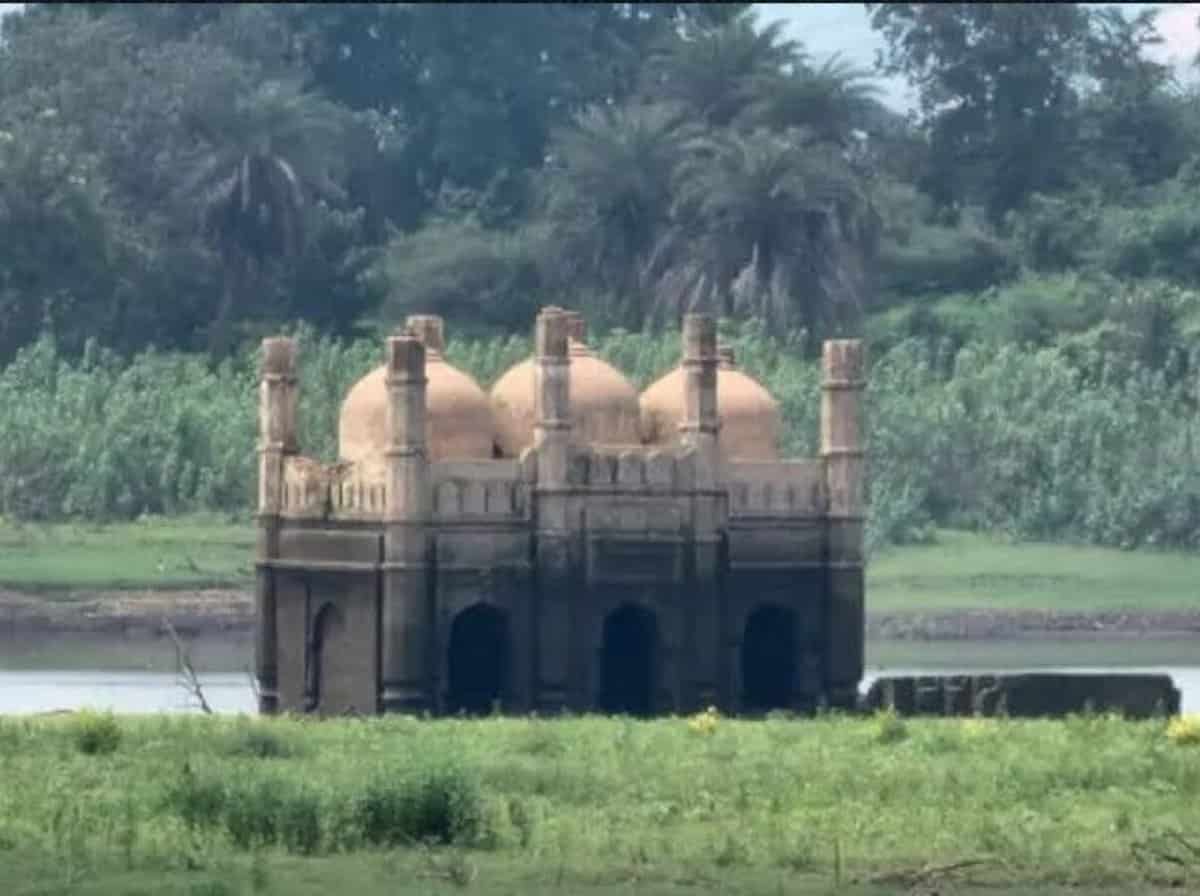
Nawada: The effect of drought in Bihar’s Nawada district is reflected after the emergence of a Masjid that was submerged in the water of the Phulwaria Dam and now is visible after being three decades underwater.
A submerged mosque at Chiraila village of Rajauli block in Bihar’s Nawada district has emerged following the drying up of water in the southern end of the Phulwaria Dam reservoir.
Old-timers recall the name of the mosque as Noori Masjid, which was submerged after the Phulwaria Dam was built in 1985. The emergence of the mosque underwater has generated curiosity among the local people and many youths were seen thronging the place at the sight of the mosque. They had always seen the water area in the reservoir and were quite surprised to see a mosque there.
Many youths were seen rushing towards the mosque wading through the mud and slush reaching the parapet of the old depleted structure. Many families were also seen rushing to see the mosque. There were many who got inside the mosque but were surprised to find the building was completely intact. This was the most fascinating part of the mosque that even after being submerged for decades there is not even the slightest damage to the structure.
Earlier, when the water level used to decrease, only a part of the dome of the mosque was visible and people were unable to place what it was all about. Now when they see the mosque out in the open when the earth is completely dry their curiosity is at rest. Now they can easily walk to see the mosque and relish the architecture of this building. The height of the mosque from the ground to the upper dome is about 30 feet.
The background of this submerged mosque is that it existed before the work on the construction of the Phulwaria Dam started in 1979. That place used to have a large population who were evicted for the construction of the dam. The entire area was acquired by the government and the people living there were relocated to Hardiya village in the Rajauli block of Nawada district. The mosque was left untouched even after the construction of the Phulwaria dam was completed. The water reservoir of the dam completely submerged the entire place including the mosque. Thanks to the draught the mosque is back in public sight.
Now when the mosque has emerged the talk of the place is its age. Many say that this mosque was built sometime in the early 20th century, and at best could be about 120 years old. Such a conclusion is drawn after seeing the architecture of the dome of the mosque which is much sharper in looks and improvement on domes built during the time of the latter Mughals.
The ironic part is the uncertain future of this mosque. What will happen to the mosque if the water again submerges the place? Will, the mosque be allowed to go blind once again to human sight or efforts may be made to relocate it elsewhere, brick by brick, mortar by mortar?
